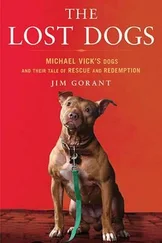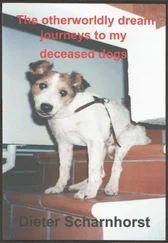But just who are these dogs? Is there something that makes them entirely different from your dog or Jake, or even that rugged German shepherd you see in the neighborhood? Is it just their training or is it something in their bloodlines? That is the question at the core of the next part of this book.
PART TWO

NATURE, NURTURE, AND TRAINING
 9
9 
SHOPPING IN EUROPE
There are no ad campaigns to entice soldier dogs to join the military, no jingles about being all the dog you can be. Dogs don’t visit recruiters to weigh the options of civilian versus military life. They have no say about whether they’ll spend their days as couch potatoes or canine combatants.
In the mid-1980s, the Department of Defense started looking toward Europe for dogs. Belgium, the Netherlands, Germany, and France sold the U.S. dogs who were essentially castoffs, by-products of the working-dog sports established there for seventy-five to one hundred years or more. Devoted amateurs made it their avocation to breed, rear, and train dogs in police-like work. They would sell their excess dogs to whatever agencies wanted them. This kicked in the demand for more of this kind of dog in Europe, and a market was born.
Soldier dogs are called to serve their country. But their country is unlikely to be their country of origin. If it were, these dogs would serve the military of places like Bulgaria, the Czech Republic, Slovakia, Hungary, Poland, the Netherlands, and Germany. Although some military dogs are purchased in the U.S., even the bulk of American-bought military dogs originally hail from these parts of Europe. They just happen to be brought back by vendors in the U.S. to be sold here.
The Department of Defense dog program wants to buy American to support American business, so who are these dogs who are so special they have to be imported from Europe? Are they so top-notch that we can’t produce them here? And what about Jake and other average American dogs? Would they have had a stab at being war dogs? Would Jake have passed the stringent testing to become a military working dog, at least back when he was a lad?
I sorted through my questions about soldier dog procurement with Stewart Hilliard, the MWD breeding program manager, who headed dog procurement for years and is still involved in procurement evaluations. “Doc Hilliard,” or “Doc,” as he’s known around here, is a civilian who works at Lackland Air Force Base, set in the dry, rugged terrain on the outskirts of San Antonio. The base is at the center of the military working dog universe. Let’s step inside one of the new buildings here.
To enter, you have to dip the soles of your shoes in a vat of green disinfectant called Roccal-D that looks eerily like the acidic “ Dip” from Roger Rabbit . My escort, Gerry Proctor, and I tramped upstairs with slightly damp, smelly shoes.
The “Doc” in Doc Hilliard comes from his PhD in behavioral neuroscience, which he likes to point out “is a fancy term for animal learning.” With a name like Doc, one might expect a short, plump, older, bespectacled man, perhaps with a white fringe of beard. So when a six-foot-four, fit, clean-shaven, brown-haired man walked into the large meeting room, it was a bit surprising.
Doc Hilliard has worked in just about every capacity with big, strong dogs for decades. He began training working dogs in 1980 and went on to specialize in Schutzhund and other dog sports popular in Europe—sports that test dogs for traits like courage, protective instinct, intelligence, and perseverance. These are vital qualities in law-enforcement dogs and military working dogs. Doc made a name for himself in the field and eventually got plucked up by the Military Working Dog Program. He’s been at Lackland since 1997 and has worked in every capacity, from dog behavior evaluator to the director of training for the program. These days, bringing the best dogs for the buck to the U.S. military is his main concern.
About five or six times a year, Doc and a small embassy of veterinarians, vet techs, handlers, and evaluators fly from San Antonio to Europe to buy young dogs they hope will become soldier dogs. During these buy trips, the team visits roughly five dog brokers in Western Europe, primarily in the Netherlands. The team’s goal is to supply hundreds of new working dogs for the Department of Defense annually.
If talking about dogs in terms of brokers sounds impersonal, then the synonymous term vendors is even less warm and fuzzy. But, again, officially these pooches are considered equipment, not soldiers. Vendors buy dogs from breeders in order to sell them to governments and law-enforcement organizations. They develop relationships with breeders, buying hundreds of dogs a year from them, and putting them all up for one-stop shopping for military entities.
Visiting a vendor has been likened to going to a flea market, but other than having dozens or hundreds of items (dogs) in one area, there’s actually little resemblance. The U.S. team isn’t jostling with the military buyers from other countries. On the days Doc Hilliard’s crew goes in to buy, it’s U.S. only. And there is no haggling, no “This dog is worth twice that! You should see what that guy over there from Yemen will give me for him, and don’t get me started on that South African buyer!” Prices are set by strict government purchase rules and regulations. The Department of Defense publishes a requirement, and brokers compete to fulfill the requirement with the lowest possible priced dogs for what the U.S. needs.
No one—not even Doc Hilliard—will officially say how much the dogs cost. The closest Doc will come is “You couldn’t buy a new car with the money, but it’s substantial.” A few sources close to the buying process say when the U.S. buys in bulk, we get dual-purpose (patrol and detection) dogs for somewhere between $3,000 and $4,500. The price adds up when you consider how many dogs we buy each year, but it’s far less than some other countries pay.
The Israeli Defense Forces, for instance, have a reputation for buying the strongest, most resilient dogs available and paying top dollar—upward of $7,000 per standard military dog, and occasionally even double that. Of course, Israel needs far fewer dogs than the U.S. does, so the country can afford to spend more on a dog. But there are plenty of handlers and trainers who wish the U.S. could spend the money needed for superior genetics in order to get dogs who have the ability to better withstand the rigors of war, from their physical robustness to their unflappable mental makeup.
“Compared to the dogs that bring top dollar, our dogs aren’t really the best. The buy teams do whatever they can within the financial limits, and trainers and handlers can make a shit dog into an excellent war dog, but it would be helpful to be able to pay for a better product,” I was told by a longtime MWD trainer.
Doc Hilliard isn’t sure that spending more money is the answer. Training and maturity can take a dog from zero to sixty in no time. “We get a lot of first-class animals. And dogs that don’t look first-class while in training may become awesome working animals in the field with maturity and experience.”
More than one-tenth of the dogs the U.S. buys will end up as washouts, failing to meet the Military Working Dog Program’s physical or behavioral standards. These dogs have problems that weren’t evident during the lengthy testing of the dogs by the dog-buying team. Most of the troubles stem from environmental issues, like fear of loud gunfire and explosions, or the inability to learn necessary basic tasks. Like people, some dogs are just slow learners. “Some are Einsteins, some are rocks,” says veterinarian Walter Burghardt, chief of behavioral medicine and military working dog studies at Lackland’s Daniel E. Holland Military Working Dog Hospital. Since they have only a set amount of time to go through the canine version of basic training, the dogs who take too long to learn aren’t going to make the cut.
Читать дальше













